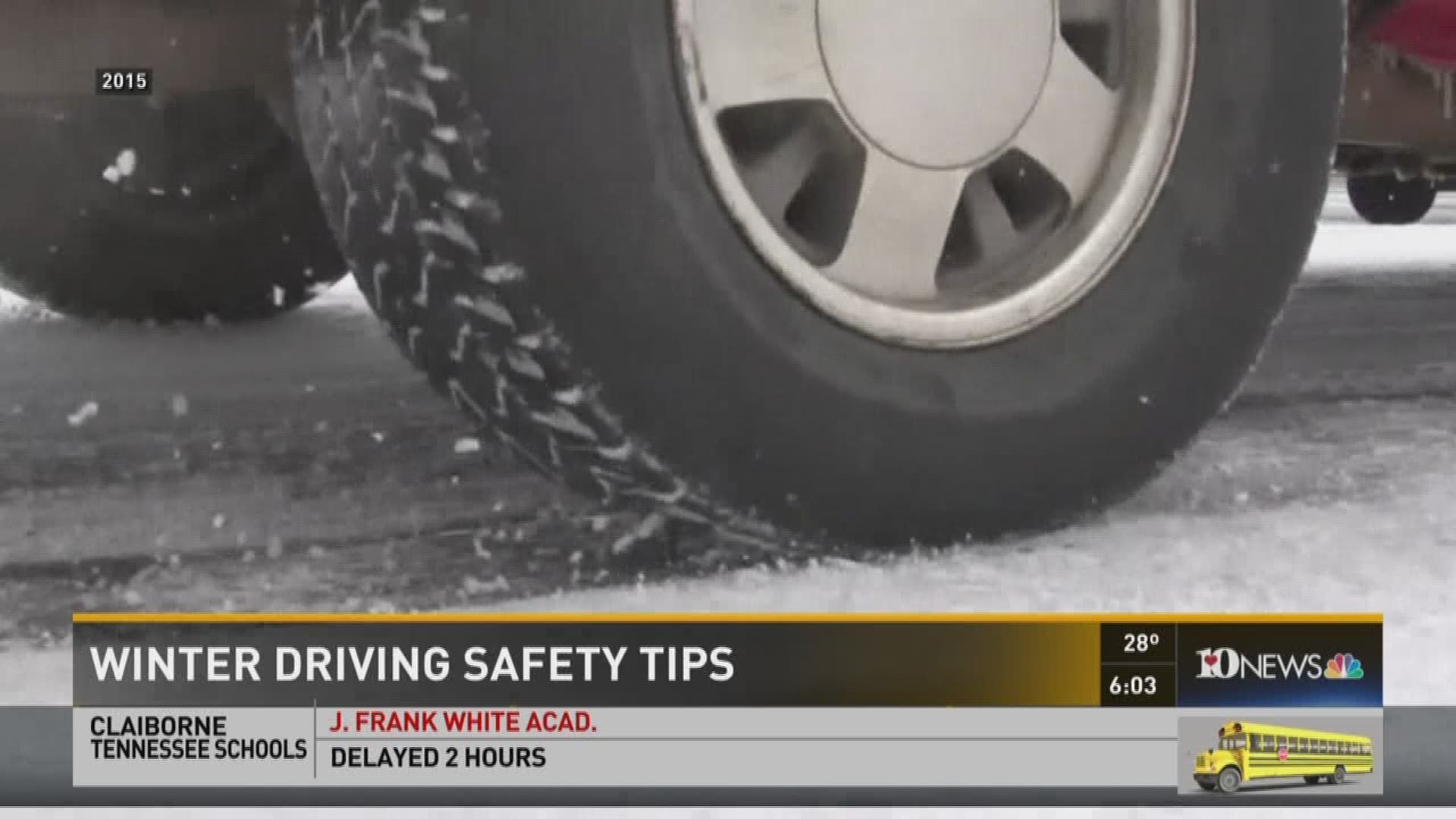Winter weather has arrived, and while it would be nice to just stay home and relax in front of a fire, the reality is many people will have to drive.
“We see extreme cold weather cause dead batteries and dangerous road conditions,” said Don Lindsey, Public Affairs Director, AAA Tennessee. “Preparing your vehicle before inclement weather strikes, can mean the difference of arriving at your destination, being stuck on the side of the road, or possibly even being involved in a crash.”
AAA encourages drivers to plan ahead and prepare your vehicle for driving in winter weather:
- Prepare an emergency road kit, which includes a charged cell phone, blankets, food, water, medication, ice scraper, flashlight, hats, gloves, sand or cat litter
- Make sure your battery is in good condition. You can go into an auto repair or supply store and have it tested. Vehicles are tougher to start in cold weather, and a good battery will ensure you can get your vehicle moving.
- Inspect cooling system hoses for leaks, cracks or loose clamps. Also, squeeze the hoses and replace any that are brittle or excessively spongy feeling.
- In areas with heavy winter weather, installing snow tires on all four wheels will provide the best winter traction. All-season tires work well in light to moderate snow conditions provided they have adequate tread depth. Replace any tire that has less than 4/32-inches of tread (distance from a quarter's edge to the top of Jefferson's head). Uneven tire wear can indicate alignment, wheel balance or suspension problems that must be addressed to prevent further tire damage.
- Check tire inflation pressure more frequently in fall and winter. As the average temperature drops, so will tire pressures, typically by 1 PSI for every 10 degrees Fahrenheit. The proper tire pressure levels can be in the owner's manual or on a sticker typically located on the driver's side door jam. Also, check the spare.
- Check the engine air filter by holding it up to a 60-watt light bulb. If light can be seen through much of the filter, it is still clean enough to work effectively. However, if light is blocked, replace it.
- Check the coolant level in the overflow tank when the engine is cold. If the level is low, add a 50/50 solution of coolant and water to maintain the necessary antifreeze capability. Test the antifreeze protection level with an inexpensive tester.
- Fill the windshield washer fluid reservoir with a winter cleaning solution that has antifreeze components to prevent it from freezing.
If there is a possibility of black ice, it's best to stay of the roads, but if it can't be avoided, AAA says:
- Remember that trucks are heavier than cars. Trucks take longer to safely respond and come to a complete stop, so avoid cutting quickly in front of them.
- Drive slowly and smoothly. Avoid sudden hard acceleration, braking or steering.
- With anti lock brakes, use steady pressure – don't pump. Pumping disables the anti lock brakes and make a skid more likely.
- Keep as much distance from other vehicles as possible.
- Always wear the seat belt.
More stories to get you ready for winter weather:

